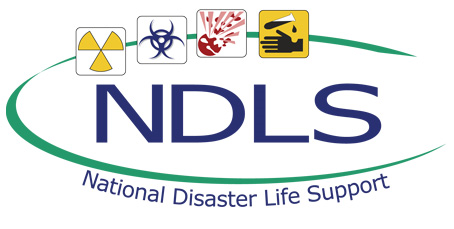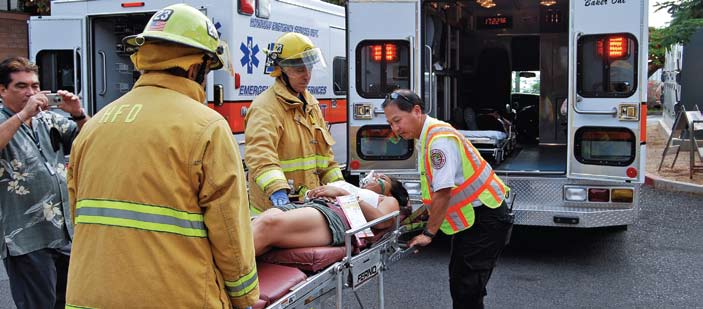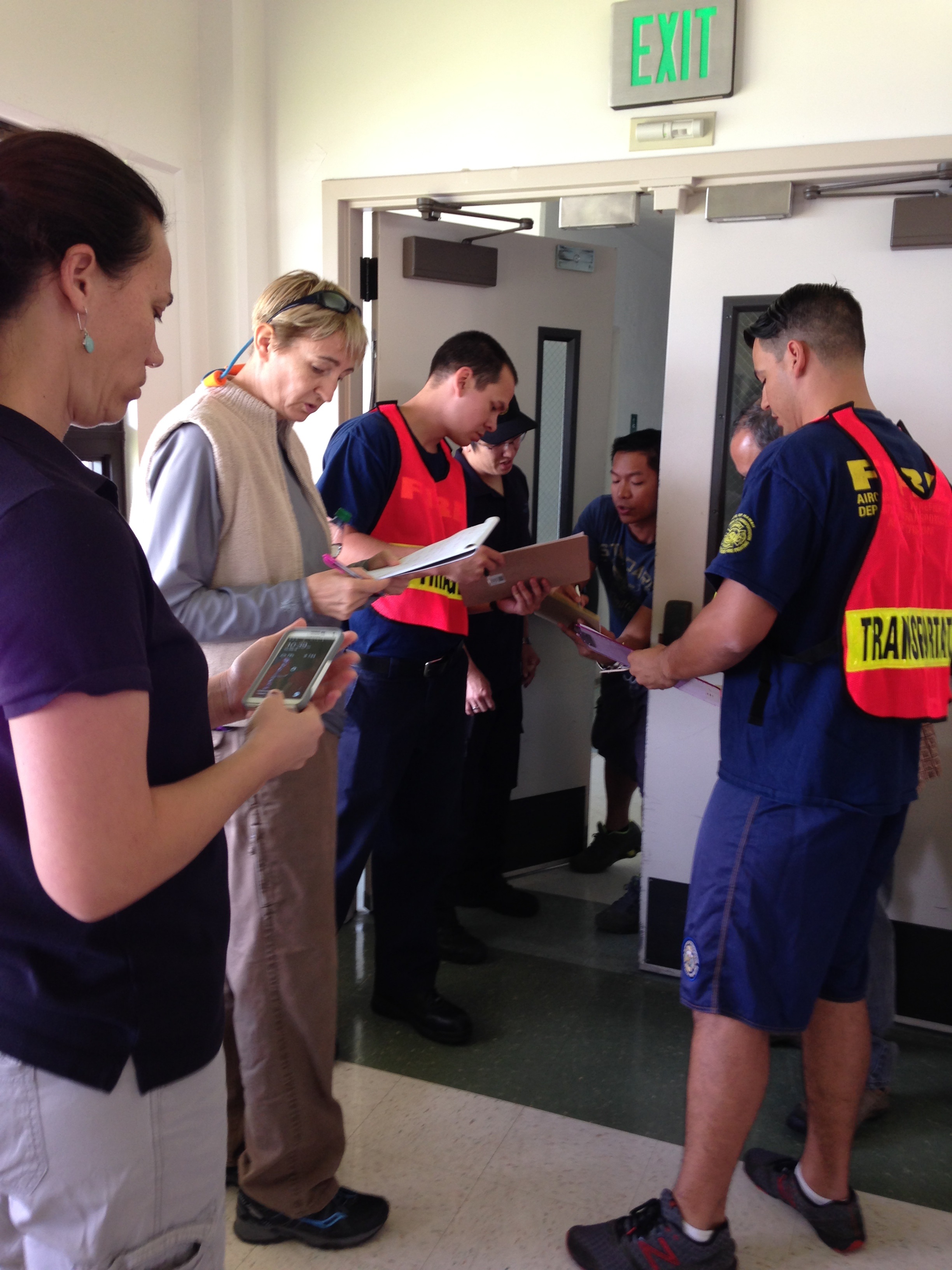 The Pacific Emergency Management, Preparedness, and Response Information Network and Training Services
The Pacific Emergency Management, Preparedness, and Response Information Network and Training Services
About Pacific EMPRINTS

The Pacific Emergency Management, Preparedness, and Response Information Network and Training Services (Pacific EMPRINTS) at the University of Hawaii was started as a broad-based consortium of public and private health educators and health services providers that was established with funding from the U.S. Health and Human Services; Health Resources Services Administration in late 2005. The San Diego State University Institute for Public Health have been long-time partners with Pacific EMPRINTS from its inception and currently hosts the newly designed and updated Pacific EMPRINTS website.
Online Courses
Take Pacific EMPRINTS online courses at SDSU IPH Professional Education section.
The Pacific EMPRINTS distance learning offerings are designed to help train the busy healthcare and public health professional on various aspects of emergency preparedness and response. To date, the Pacific EMPRINTS online program has enrolled learners from all 50 States and more than 110 countries.
The close academic partnership with the SDSU's Institute for Public Health started back in September 2005 when Pacific EMPRINTS was established after being awarded $4.14 million in federal funding from the U.S. Department of Health and Human Services’ Health Resources and Services Administration (HRSA), and the IPH was one of the key collaborators on the project.
Program Mission
Effectively addressing the health needs of communities that have experienced large scale CBRNE (Chemical, Biological, Radiological, Nuclear, Explosive) incidents, natural disasters and other public health emergencies requires many elements, among which are: 1) a community-wide emergency management system, and 2) the application of modern technology to assist professionals in the field. The Pacific EMPRINTS program is committed to the continuing education program for health professionals and first responders focusing on these two elements.
Program Goals
Training activities target physicians, epidemiologists, nurses, dentists, mental health workers, pharmacists, first responders, long-term care and community health professionals, and other types of public health personnel.
The primary goals of Pacific EMPRINTS are to help public health professionals to:
- Recognize terroristic and other public health emergencies;
- Meet the acute needs of the population, including vulnerable populations; and
- Rapidly and effectively alert the public health system of an event at the community, state and national levels.
Past Conferences

- On the Frontline: Influenza and Other Viral Threats to Public Health, Hilton Hawaiian Village Resort and Spa, March 22, 2006
- 2008 Pacific Preparedness Conference: Capacity Building to Address Vulnerable Populations, Hilton Waikiki Prince Kuhio Hotel, January 16, 2008
- 2009 Pacific Preparedness Conference: Capacity Building to Address Vulnerable Populations: Train-the Trainer, Hilton Waikiki Prince Kuhio Hotel, January 22-23, 2009
- 2010 Pacific Preparedness Conference: Capacity Building to Address Vulnerable Populations in Natural Disasters, Manoa Grand Ballroom, Japanese Cultural Center, March 31, 2010.
- 2011 Pacific Preparedness Conference: Challenges for Practice, Policy and Public Health, Ala Moana Hotel, September 16, 2011
National Disaster Life Support Regional Training Center-Pacific

For more information to inquire about training opportunities, Contact Dr. Ann Sakaguchi, emprints@hawaii.edu
Instructor-Led Training: National Disaster Life Support™ (NDLS™) Trainings
In 2003, the American Medical Association (AMA), in partnership with four major medical centers and three national health organizations, established the National Disaster Life Support (NDLS) training program to better prepare health professionals and emergency response personnel for mass casualty events. The overarching goal is to standardize emergency response training nationwide and strengthen our nation’s public health system. The academic medical centers are: Medical College of Georgia at Augusta University, Center for Operational Medicine (NTC - East), University of Texas Southwestern Medical Center at Dallas - (NTC - West), University of Georgia, Institute of Disaster Management, University of Texas - Houston, School of Public Health.

Since 2008, the Pacific EMPRINTS Program was designated the National Disaster Life Support (NDLS) Regional Training Center-Pacific. Regional Training Centers are accredited to conduct all three courses (CDLS®, BDLS®, and ADLS® ) and Instructor Certifications within their region. All training centers are part of the National Disaster Life Support Education Consortium™ (NDLSEC™).
NDLSEC Mission

The mission of the National Disaster Life Support Education Consortium™ (NDLSEC™) is to achieve and promote excellence in education, training, and research related to disaster medicine and public health preparedness for all health professionals based on sound educational principles, scientific evidence, and best clinical and public health practices.
To fulfill its mission and realize its desired impact, the NDLSEC will serve as a community of health professionals dedicated to formalized, life-long learning in disaster medicine and public health preparedness with a shared vision to create a nationwide network of health professionals who are ready, willing, and able to meet the health and safety needs of all person s and communities affected by disasters and public health emergencies.
The National Disaster Life Support™ (NDLS™) courses
The National Disaster Life Support™ (NDLS™) courses are a series of education programs to better prepare health care professionals and emergency response personnel for mass casualty events. The NDLS courses stress a comprehensive, all-hazards approach to assist health professionals respond to disasters and other public health emergencies, and include the following:
The Core Disaster Life Support® (CDLS) course

The Core Disaster Life Support® (CDLS) course is a 3.5 hour competency-based, awareness-level course that introduces clinical and public health concepts and principles for the management of disasters and public health emergencies. The course incorporates the “all-hazards” approach to personal, institutional, and community disaster management through the use of two unique mnemonics, the PRE-DISASTER Paradigm™ (which applies to event mitigation and preparedness) and the DISASTER Paradigm™ (which applies to event recognition, response, and recovery).
The overarching aim of the CDLS course is to provide participants from diverse professions, disciplines, and backgrounds with a common lexicon, vocabulary, and knowledge in disaster-related medicine and public health that can be reinforced and expanded in the BDLS® and ADLS® courses. The CDLS course is aimed at a broad range of audience categories, including medical first responders, health professionals, health service providers, public health workers, and health support personnel.
Upon completion of the CDLS course, participants will be able to:
- Describe the all-hazards approach to disaster mitigation, preparedness, response, and recovery.
- Discuss essential components of federal, state, regional, and community disaster health systems, including the role of the public and private health sectors.
- Describe the elements of the PRE-DISASTER Paradigm and their application to the management of disasters and public health emergencies.
- Describe actions that can be taken to enhance personal preparedness and resilience for disasters and public health emergencie.
- Identify legal and ethical issues that impact disaster mitigation, preparedness, response, and recovery, including the basic legal framework for public health.
- Describe the elements of the DISASTER Paradigm and their application for the management of disasters and public health emergencie.
The Basic Disaster Life Support™ (BDLS®) course:

The Basic Disaster Life Support™ (BDLS®) course is a 7.5 hour competency-based, awareness-level course that introduces concepts and principles to prepare health professionals for the management of injuries and illnesses caused by disasters and public health emergencies. The course builds upon, applies, and reinforces information presented in the Core Disaster Life Support® (CDLS®) course. This includes application of core principles and concepts in emergency management and public health as introduced in the CDLS course through the PRE-DISASTER Paradigm™ and DISASTER Paradigm™. The primary focus of the BDLS course is incorporation of an “all-hazards” approach to mass casualty management and population-based care across a broad range of disasters. Measures to ensure and enhance health workforce readiness are emphasized throughout the course. This includes a consistent and scalable approach to workforce protection and casualty management, as well as, mass casualty triage and fatality management.
The BDLS course is designed to engage participants through interactive scenarios and group discussion. The overarching aim of the BDLS course is to teach a common lexicon, vocabulary, and knowledge base for the clinical and public health management of all ages and populations affected by disasters and public health emergencies, through a standardized curriculum that is practical and relevant for all health professionals. Knowledge gained in the course can then be reinforced and expanded through application in the Advanced Disaster Life Support™ (ADLS®) course. The BDLS course is aimed at a broad range of audience categories that share a common likelihood of providing clinical care and assistance to casualties during a disaster or public health emergency, including healthcare, public health and allied health professionals; emergency medical services personnel; and other medical first responders and receivers.
Upon completion of the BDLS course, the participant will be able to:
- Describe an all-hazard, standardized, scalable casualty management approach for use in disasters and public health emergencies, including life-saving interventions and medical decision making in an altered care environment.
- Describe information sharing, resource access, communication, and reporting methods useful for health professionals during disasters and public health emergencies.
- Describe the purpose and importance of the incident management system for providing health and medical support services in a disaster or public health emergency.
- Describe field, facility, community, and regional surge capacity assets for the management and support of mass casualties in a disaster or public health emergency.
- Describe considerations and solutions to ensure continuity of and access to health-related information and services to meet the medical and mental health needs of all ages, populations, and communities affected by a disaster or public health emergency.
- Describe public health interventions appropriate for all ages, populations, and communities affected by a disaster or public health emergency.
- Identify the potential casualty population in a disaster or public health emergency, including persons with acute injuries or illnesses; those with pre-existing disease, injuries, or disabilities; those with age-related vulnerabilities and other functional and access needs; and their family/caregiver support network.
- Describe the deployment readiness components for health professionals in a disaster or public health emergency.
- Describe an all-hazards standardized, scalable workforce protection approach for use in disasters and public health emergencies, including detection, safety, security, hazard assessment, support, and evacuation or sheltering in place.
- Describe actions that facilitate mass casualty field triage utilizing a standardized step-wise approach and uniform triage categories.
- Describe the concepts and principles of mass fatality management for health professionals in a disaster or public health emergency.
- Describe the clinical assessment and management of injuries, illnesses, and mental health conditions manifested by all ages and populations in a disaster or public health emergency.
- Describe moral, ethical, legal, and regulatory issues relevant to the health- related management of individuals of all ages, populations, and communities affected by a disaster or public health emergency.
The Advanced Disaster Life Support™ (ADLS®) course

The Advanced Disaster Life Support™ (ADLS®) course is an intense 15-hour course that allows participants to demonstrate competencies in mass casualty management. Core education elements include the ADLS manual and five interactive lectures (Disasters and Public Health Emergencies; Triage in Disasters and Public Health Emergencies; Health System Surge Capacity for Disasters and Public Health Emergencies; Community Health Emergency Operations and Response; and Legal and Ethical Issues in Disasters). Essential training components include population scenarios discussion; mass casualty triage tabletop and situational training exercises; surge tabletop scenario for a health care facility; personal protective equipment skills performance and decontamination video review; casualty management in small groups with simulated scenarios; and emergency operations center situational training exercise. ADLS requires learners to apply knowledge learned in the Core Disaster Life Support® (CDLS®) and Basic Disaster Life Support™ (BDLS®) courses.
Successful completion of the BDLS course is a prerequisite for attendance at the ADLS course. The ADLS course target audience includes physicians, nurses, physician assistants, emergency medical technicians (EMTs), paramedics, pharmacists, allied health professionals, and students in health professional schools.
Course objectives:
- Explain the shift from individual- to population-based care in a disaster or public health emergency.
- Practice mass casualty triage in a simulated disaster scenario.
- Choose strategies to establish organizational and community surge capacity in a disaster or public health emergency.
- Differentiate roles performed in an emergency operations center or incident command center established in response to a simulated mass casualty event.
- Discuss legal, regulatory, and ethical principles and practices to enable health professionals to provide crisis standards of care in a disaster or public health emergency.
- Select personal protective equipment and decontamination measures appropriate for personnel and public health protection in a disaster or public health emergency.
- Apply clinical skills for the management of mass casualties in simulated all-hazards scenarios.
The Advanced Disaster Life Support™ -Instructor (ADLS® Instructor) course

The Advanced Disaster Life Support™ (ADLS®) Instructor course is a 4-hour course provided for any individual who has successfully completed the ADLS® course and desires to become an instructor. The half-day course includes instruction in coordinating and conducting the four rotating stations of ADLS® . These stations are S.A.L.T. Triage, Human Patient Simulations, PPE and Decontamination and Disaster Skills.
Each station requires unique equipment and supplies and poses logistical challenges. Instructions are provided regarding how to set up the scenarios and how the mock victims are used in support of the course. The requirement for victim moulage is also detailed to include presenting symptoms and circumstances.
For more information to inquire about training opportunities, Contact Dr. Ann Sakaguchi, emprints@hawaii.edu
 ©2004-2025 Copyright the Institute for Public Health (IPH) SDSU. All rights reserved.
©2004-2025 Copyright the Institute for Public Health (IPH) SDSU. All rights reserved.